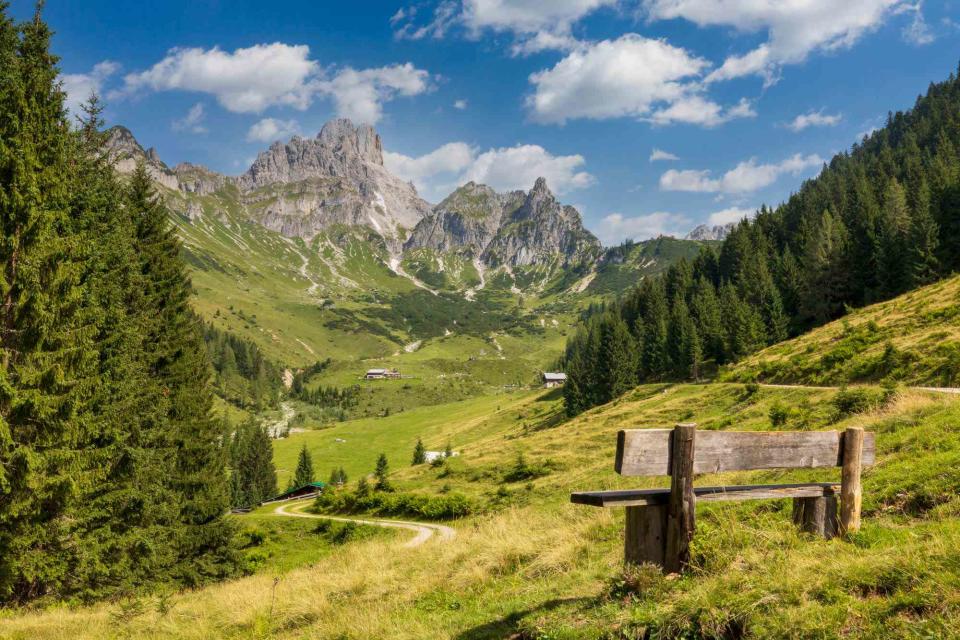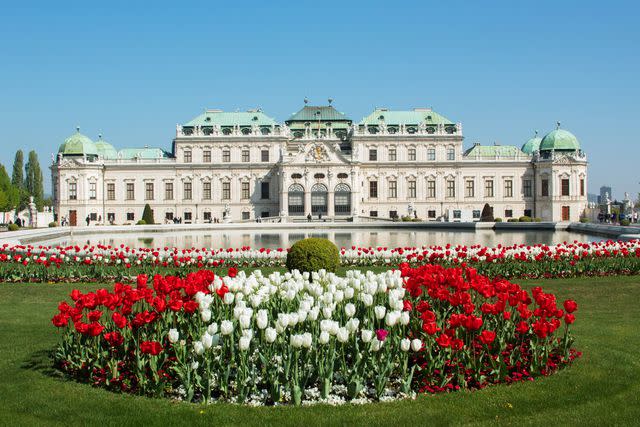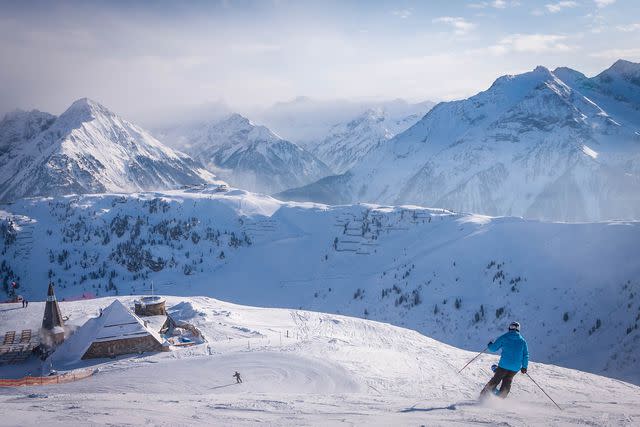The Best Times to Visit Austria, According to Locals
Cozy mountain weekends, alpine hikes, and glamorous nights out in Vienna await.

DieterMeyrl/Getty Images
If you’ve been dreaming of a city escape or an alpine getaway in Austria, there's no better time than the present to start planning. From hiking in the Alps and swimming in glacial lakes to skiing, waltzing, and exploring some of Europe’s most impressive architecture, the list of things to do in Austria is vast and varied. Depending on your ideal adventure, you’ll want to book your trip at the appropriate time of year. Austria's travel seasons are:
High Season: May through August
Shoulder Seasons: April to May, September to October
Low Season: November to March
Ski Season: Late November to April
Austrian winters are defined by a few things, namely ball season and ski season. “The ball season in February, which is counted as Vienna’s fifth season of the year, is one of a kind," says Tina Haselbacher, owner of Almanac Hotels. "It’s the highlight on social calendars, as everyone gathers to dance and celebrate Viennese culture.” The colder months are also the perfect time to head to the mountains for a bit of downhill skiing. “I’d save any alpine trips for the beginning of December to April, and alternate this with a city break from April to December,” says Claudia Epp, general manager of The Arula Chalets.
Travelers looking to explore Austria’s larger cities — namely Vienna, Graz, Linz, and Salzburg — should consider the shoulder seasons. “In the cities, May, September, and October tend to be most pleasant," says Michael Gigl, head of market U.S.A. at the Austrian Tourist Office. "Summers have become warmer in recent years (something that Vienna e.g. is actively addressing by greening the city even more)." If you’d rather come during the summer, Gigl recommends July and August for visiting Austria’s mountain and lake regions.
Keep reading to discover the best times to travel to Austria, whether you’re looking to avoid crowds, save money, or enjoy Christmas markets, Viennese balls, and après-ski activities.
Best Times to Visit Austria for Smaller Crowds

Deanna Mazzola/Travel + Leisure
The shoulder months — April, early May, September, and October — are the best times to visit Austria if you want to avoid crowds. “Our main cities, like Vienna or Salzburg, tend to be busiest during the summer season, from May through September,” says Gigl. Although, he notes, “Overcrowding is less of an issue in Vienna compared to some other cities, [which is] especially notable while museum hopping. A visit to the Kunshistorisches Museum, the Belvedere, or the Albertina is decidedly less hectic or crowded in comparison to other world-class cultural institutions.”
Best Times to Visit Austria for Good Weather
There are different types of “good weather” in Austria, and it depends on the season and your itinerary. “The winters are stunning with snow on the slopes and outdoor activities, from skiing to wandering the street markets,” says Haselbacher. Just make sure you pack the appropriate gear; temperatures in the winter tend to hover around — and a little below — freezing. The mountains will also be colder than the cities.
If you prefer warmer weather, plan your visit during June, July, or August, when temperatures can reach the mid-80s and the sun doesn’t set until after 8 p.m. Summer is great for experiencing “the outdoor pools, Prater Park in Vienna, and heading out into the mountains for hiking and biking,” Haselbacher adds. If you’re exclusively visiting Austria’s cities, Epp recommends the spring or the autumn, “when the heat is more bearable.”
Best Times to Visit Austria for Lower Prices
Hotel prices will vary depending on where and when you’re visiting Austria. “Vienna’s hotel rates can be influenced by major congresses and conventions, often in June, September, or October," says Gigl. "Salzburg room demand is highest during the Salzburg Festival season [from] late July through August.”
Outside of the larger events, Haselbacher says, “Prices tend to drop in the summer when temperatures rise, and in January when the Christmas season and festivities are over and before the ball season kicks into high gear.” Prices also reflect demand in the mountains, where “prices soar during the winter season, particularly over the festive period,” says Epp.
Best Times to Visit Austria for Skiing, Christmas Markets, and Balls

Алексей Облов/Getty Images
Austrian winters may have shorter days, with the sun setting a little after 4 p.m., but it’s still one of the most exciting times to visit the country. “For a winter wonderland, plan a trip anywhere from the first week of December to the beginning of January to experience the Christmas markets,” says Haselbacher. Epp echoes her statement, noting that Vienna’s Christmas market “is considered the largest and one of the most beautiful in Europe.” The colder weather also gives way to Vienna’s ball season. “February is [all about] the social scene, with hundreds of balls and everyone dressed up to celebrate and dance the night away,” explains Haselbacher. Many of the balls are open to the public — just pack a tuxedo or a gown and purchase tickets online.
Ski season happens simultaneously with the holidays and festive season, though you may want to wait until the tail end of winter to go. “For skiing, the best time of year is March, where days are snow-sure, longer, and warmer — the best of everything,” says Epp.
Worst Times to Visit Austria
“Austria has a variety of events and experiences for all interests,” says Haselbacher, “and there really is no bad time to visit.” You may, however, want to avoid the height of summer, particularly if you prefer air conditioning, which is not as common in Europe as it is in the United States.
For more Travel & Leisure news, make sure to sign up for our newsletter!
Read the original article on Travel & Leisure.

